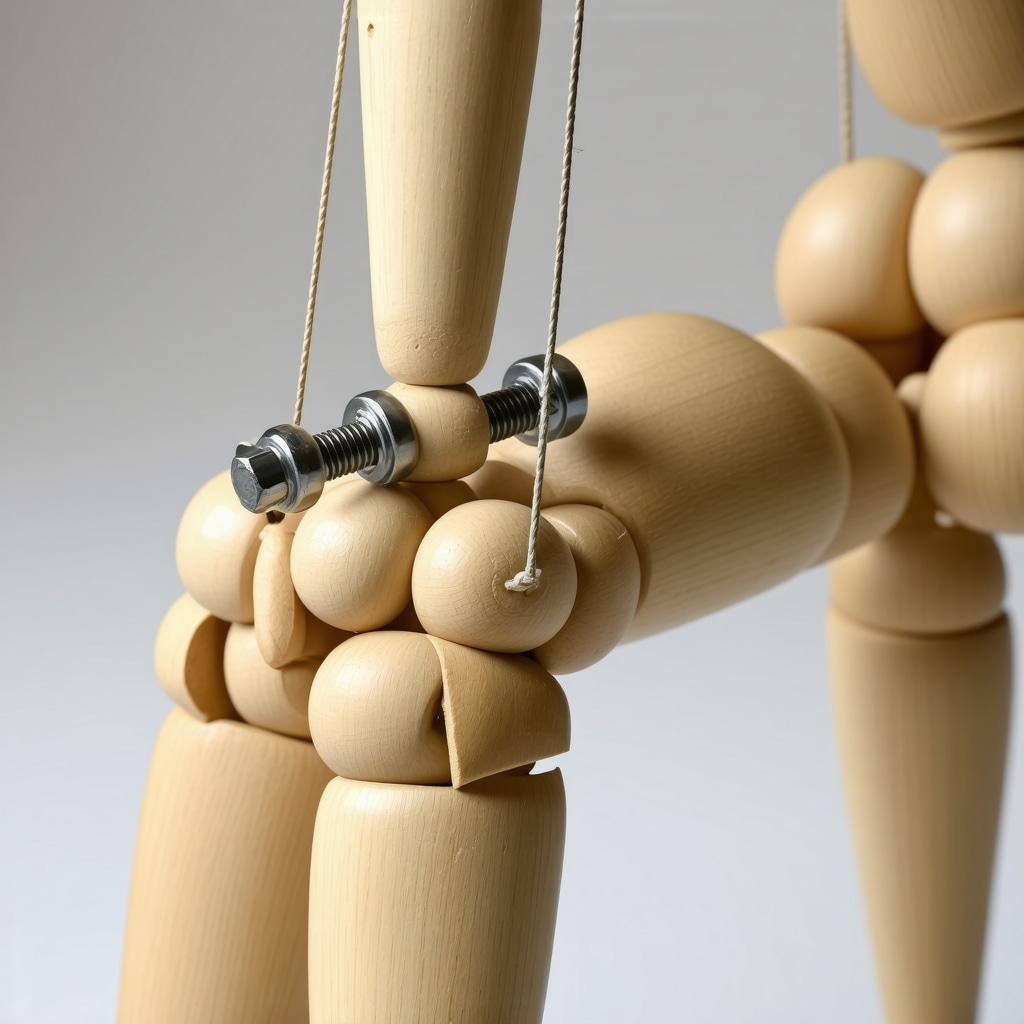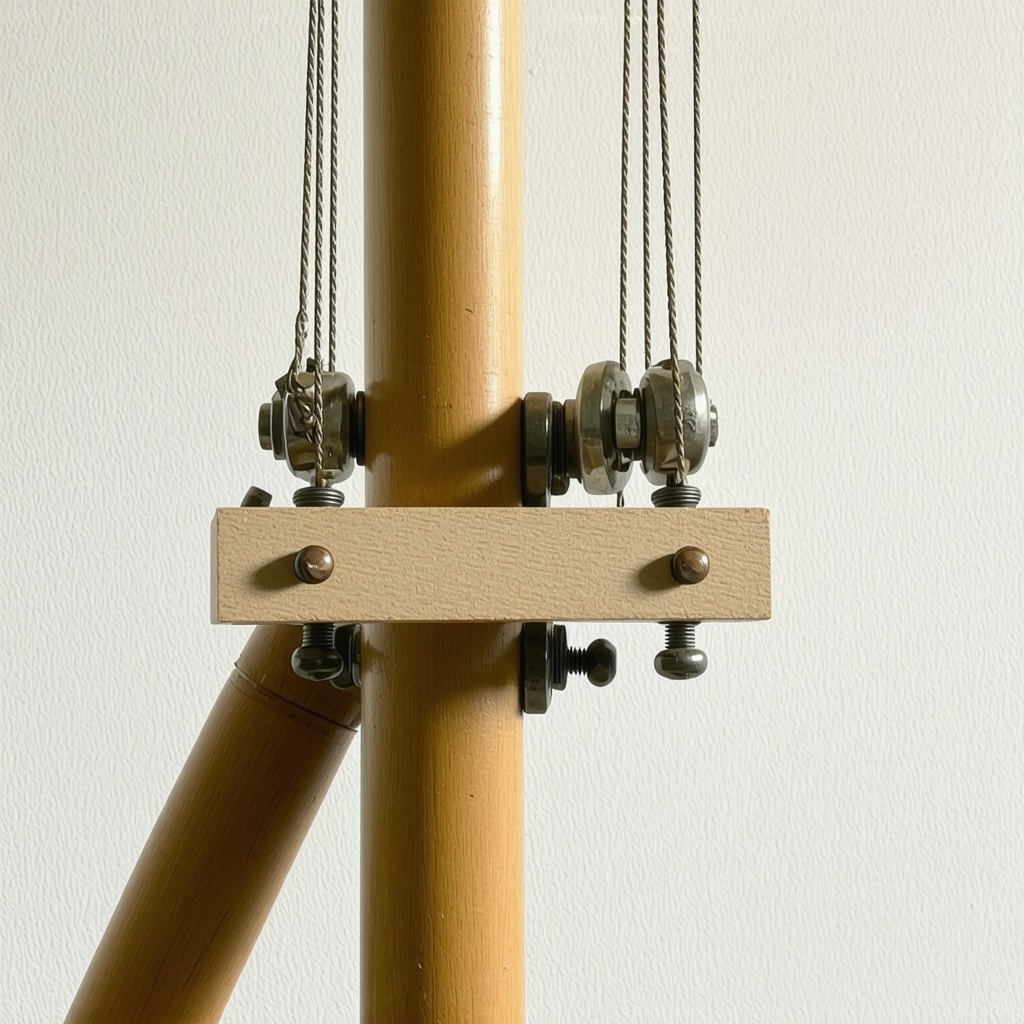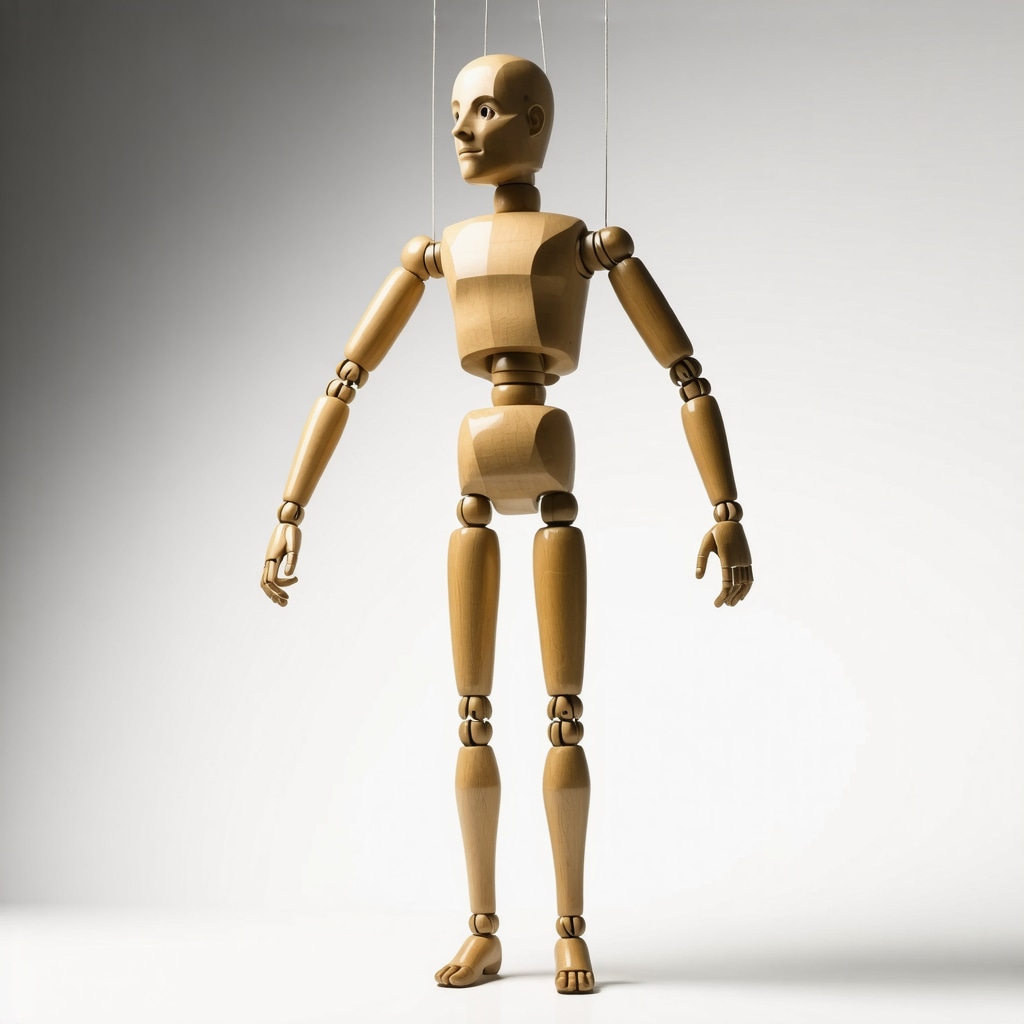Unleashing Your Inner Puppeteer: The Magic Behind Custom Marionettes
Ever watched a puppet dance across the stage and wondered, “How did they make it move so lifelike?” Well, my curious reader, you’re about to embark on a whimsical journey into the world of crafting your very own marionette with articulate limbs and controls—an art form that combines engineering, artistry, and a dash of theatrical flair.
Why Settle for Store-Bought When You Can Create a Masterpiece?
Let’s face it, mass-produced puppets are charming, but nothing beats the satisfaction of designing and building a marionette that reflects your personality and craftsmanship. Personalizing your puppet isn’t just a hobby; it’s a form of storytelling, a way to breathe life into wood and string. Plus, it’s an excellent way to impress friends at your next backyard puppet show or to add a unique touch to your theatrical productions.
Breaking Down the Marionette Magic: Articulated Limbs & Controls
The secret to a lifelike puppet lies in its articulated limbs—think of them as the joints and muscles that mimic real human movement. Incorporating flexible joints, like ball-and-socket or hinge joints, allows for a range of motion that makes your puppet come alive. Controls, on the other hand, are the puppeteer’s secret weapons—strings, rods, or even remote mechanisms—that orchestrate each movement with precision and grace.
Is It Really Possible to Build a Marionette That Moves Like the Real Thing?
Absolutely! With patience, a bit of technical know-how, and some creative problem-solving, you can craft a marionette that performs with astonishing realism. The key is understanding the mechanics—where to place joints, how to balance the weight, and how to connect controls seamlessly. For detailed guides, check out resources like step-by-step DIY guides that cater to all skill levels.
Now, imagine the joy of manipulating your handcrafted puppet, making it dance, bow, or even tell a story. It’s an experience that combines craftsmanship and performance, elevating your DIY skills to a new level.
From Sketch to Stage: The Creative Process
The journey begins with sketching your puppet’s design—deciding on size, style, and personality. Next, selecting suitable materials—wood, wire, fabric, and paint—that balance durability with aesthetic appeal. As you assemble the joints and controls, you’ll find yourself increasingly invested in each step, transforming raw materials into a charismatic performer.
And don’t forget, the finishing touches—painting, dressing, and adding expressive features—are what give your marionette its soul. For inspiration, explore some of the most innovative DIY projects that push the boundaries of traditional puppet-making, like creative DIY crafts.
Why Not Share Your Puppet Masterpiece?
Once your marionette dances to your tune, why not showcase it? Whether for a local puppet festival or a fun social media video, sharing your work can inspire others and spark a community of puppet enthusiasts. Plus, engaging with fellow crafters opens the door for new ideas and collaborations.
So, are you ready to take on the challenge of creating a custom-made marionette that’s as expressive as your imagination? Dive into the world of articulated limbs and controls, and let your craftsmanship tell a story worth watching.
Unlocking the Secrets of Fluid Marionette Motion: Advanced Techniques for Puppeteers
Ever watched a marionette glide effortlessly across the stage and wondered, “How do they achieve such lifelike movement?” The answer lies in mastering advanced control techniques that bring your puppet’s performance to a new level of realism and expressiveness. As seasoned puppeteers know, the key is in understanding the delicate balance of joint articulation, weight distribution, and control mechanics—elements that turn simple strings into a symphony of motion.
Beyond Basics: Fine-Tuning Joints and Movements
Enhancing your puppet’s articulation involves more than just installing basic hinges or ball-and-socket joints. It requires meticulous calibration of tension and friction, ensuring each limb moves smoothly and naturally. For example, integrating counterweights or using adjustable joints can help balance the puppet’s weight, reducing strain on strings and allowing for more subtle gestures. If you’re curious about how to refine your marionette’s joints, exploring advanced control mechanisms can offer valuable insights into precision puppetry.

Image showing detailed joint assembly with adjustable tension screws and counterweights.
The Power of Control: Innovative Mechanisms for Expressive Performance
Traditional strings are just the beginning. Modern puppetry often employs remote-controlled mechanisms, servo motors, or wireless controls that enable complex movements and synchronized performances. These innovations open doors for puppeteers to create more dynamic and emotionally compelling shows, especially when manipulating multiple puppets simultaneously. Integrating such technology requires a solid understanding of electronics and mechanics, but the results are truly spectacular. For a comprehensive guide, consider exploring smart control solutions tailored for puppetry applications.
What if your puppet could perform with the nuance and emotion of a seasoned actor?
Imagine combining traditional craftsmanship with cutting-edge technology to craft puppets that respond to subtle cues and convey complex emotions. This fusion of art and science not only enhances storytelling but also pushes the boundaries of what puppetry can achieve. For those eager to delve deeper into the mechanics of puppet control, building custom control rigs or experimenting with microcontrollers can be a game-changer. Check out innovative DIY solutions for inspiration on integrating technology with artistry.
Engaging with the community of puppet enthusiasts can also spark new ideas—sharing your experiments, successes, and challenges fosters collective growth. Whether you’re aiming to craft a puppet capable of nuanced performance or simply want to elevate your puppetry skills, continuous learning and experimentation are your best allies.
Refining Joint Mechanics: The Art of Achieving Seamless, Natural Motion
To elevate your marionette’s performance from competent to breathtaking, an in-depth understanding of joint calibration is essential. Beyond basic hinge and ball-and-socket joints, advanced puppeteers experiment with adjustable tension screws, friction washers, and counterweight systems to fine-tune movement fluidity. These modifications enable subtle gestures—like a delicate wrist twist or a natural head tilt—that convey nuanced emotion and realism. Incorporating digital tools such as torque sensors or micro-adjustable joints, as discussed in a recent study in puppet biomechanics, provides unprecedented control and repeatability. Mastering these elements transforms static limbs into dynamic storytellers, capable of conveying complex narratives through motion.
The Evolution of Control Mechanisms: From Strings to Smart Puppetry
Traditional string control remains fundamental, yet the integration of modern electronic systems revolutionizes puppetry. Servo motors, microcontrollers like Arduino or Raspberry Pi, and wireless modules facilitate remote manipulation with precision and complexity previously unattainable. For example, installing micro-actuators within joints allows puppeteers to execute intricate gestures with minimal physical effort, enabling performances rich in emotional depth. An innovative approach detailed in IEEE’s exploration of robotic puppetry demonstrates how automation can complement human control, opening new creative horizons. This fusion of artistry and engineering demands a solid grasp of mechanics, electronics, and programming but rewards performers with highly expressive, synchronized motions that captivate audiences.

Image illustrating a custom control rig with servo motors and microcontroller integration for marionette movement.
Nuance and Emotion: Crafting Puppets with Responsive, Human-Like Expression
Imagine a puppet that not only moves convincingly but also responds to subtle cues—an eyebrow raise, a slight head turn—that communicate a range of emotions. Achieving this requires combining precise mechanical control with sensory inputs such as pressure sensors or accelerometers, which can detect the puppeteer’s intent or environmental cues. Integrating these sensors with microcontrollers enables the puppet to perform reactive gestures, elevating storytelling to new heights. For instance, a puppet reacting to audience applause with a bow or a surprised expression can deeply engage viewers, blurring the line between performer and performer’s creation. The challenge lies in balancing technical complexity with artistic finesse, a pursuit explored extensively in research on interactive puppetry systems. For enthusiasts eager to push boundaries, experimenting with microfluidic actuators or machine learning algorithms can unlock unprecedented expressive capabilities.
If you’re motivated to deepen your mastery, consider joining online forums or workshops dedicated to advanced puppetry technology. Sharing your experiments and learning from experts accelerates innovation and inspires fresh ideas—ultimately bringing your marionettes to life with a realism that captivates and inspires.
Refining Articulation for Seamless, Expressive Motion: Expert Insights
Achieving truly lifelike marionette movement demands meticulous attention to joint mechanics and control precision. Seasoned puppeteers often employ adjustable tension screws, friction washers, and counterweight systems to refine limb articulation, enabling subtle gestures like a delicate wrist tilt or a nuanced head turn. Integrating digital tools such as torque sensors or micro-adjustable joints—discussed comprehensively in a recent study on puppet biomechanics—provides unprecedented control and repeatability. This attention to detail transforms static joints into dynamic storytellers, capable of conveying complex narratives through fluid, natural motion.
Innovative Control Mechanisms: Elevating Puppetry with Technology
Modern puppetry transcends traditional string manipulation by incorporating remote-controlled mechanisms, servo motors, and wireless systems. These innovations allow puppeteers to execute intricate, synchronized movements, especially when managing multiple marionettes simultaneously. For example, embedding micro-actuators within joints coupled with microcontrollers like Arduino or Raspberry Pi enables precise, responsive gestures that evoke deep emotional responses. An exploration of these advancements can be found in IEEE’s research on robotic puppetry. The fusion of engineering and artistry not only expands creative possibilities but also enhances audience engagement, making performances more compelling and nuanced.
How Can Microcontroller Integration Transform Your Puppetry?
By integrating microcontrollers with servo motors, puppeteers can automate complex sequences, introduce reactive behaviors, and synchronize multiple puppets seamlessly. This approach opens avenues for storytelling that was previously impossible with manual control alone. Curious about how to start? Check detailed tutorials on smart control solutions for DIY puppetry and explore the endless possibilities of combining technology with creative craftsmanship.
Enhancing Emotional Nuance: Sensing and Responsive Puppetry
To craft puppets capable of conveying nuanced emotions, integrating sensors such as pressure pads, accelerometers, or even optical sensors is essential. These inputs can be processed by microcontrollers to trigger reactive gestures—like a subtle brow raise or a shy glance—that deepen storytelling impact. For instance, a puppet responding to environmental cues or audience reactions can dramatically elevate engagement levels, blurring the lines between performer and creation. This complex integration is discussed extensively in research on interactive puppetry systems. For enthusiasts, experimenting with microfluidic actuators or machine learning algorithms can unlock unprecedented expressive depth, pushing the boundaries of traditional puppetry.
Thinking about stepping into this advanced realm? Join online forums and workshops dedicated to high-tech puppetry, where sharing your experiments accelerates innovation and inspires new storytelling techniques. Remember, continuous learning and experimentation are the keys to transforming your marionette artistry into captivating, emotionally resonant performances.
Expert Insights & Advanced Considerations
Refine Joint Articulation with Precision Tuning
Achieving seamless, natural motion in your marionettes requires meticulous calibration of joint tension, friction, and counterweights. Utilizing digital tools like torque sensors can enhance control and repeatability, allowing for subtle gestures that convey nuanced emotions. This level of mastery transforms static joints into expressive storytellers, elevating your puppetry to an art form.
Integrate Cutting-Edge Control Technologies
Modern puppetry benefits from remote-controlled mechanisms, servo motors, and wireless systems. These innovations enable complex, synchronized movements, especially when managing multiple marionettes. Investing in microcontrollers such as Arduino or Raspberry Pi allows for automation and reactive behaviors, dramatically expanding creative possibilities and audience engagement.
Enhance Expressiveness with Sensory Feedback
Incorporating sensors like pressure pads or accelerometers enables puppets to respond to environmental cues or audience interactions. This integration creates reactive gestures that deepen storytelling impact, making marionettes more lifelike and emotionally resonant. Balancing technical complexity with artistic finesse is key to pushing the boundaries of traditional puppetry.
Expert-Level Resources for Deepening Your Craft
- “Advanced Digital Control Systems for Puppetry” — A comprehensive guide exploring microcontroller programming and automation techniques.
- “Puppet Biomechanics and Joint Mechanics” — A scholarly article detailing joint calibration and motion optimization.
- “Interactive Puppetry with Sensors and Feedback” — An online course on integrating sensory inputs for reactive puppetry performances.
Final Expert Perspective
Mastering advanced marionette techniques involves a fusion of mechanical precision, electronic innovation, and artistic expression. As you push beyond basic controls, you’ll unlock a new realm of storytelling, where puppets move with authentic nuance and emotional depth. Dive into these expert resources, experiment boldly, and share your innovations with the community. Your journey into high-level puppetry can inspire and elevate the art form itself. For ongoing inspiration, explore more at creative DIY projects and smart DIY innovations.

